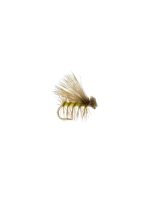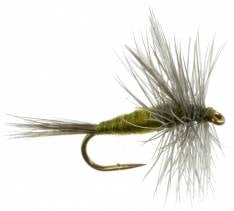Get ready to be schooled on how to fly fish the Big Horn River. You’ll learn about the history of the river, prime fishing times, best access points, secrets to escape the crowd, top gear recommendations, right flies for each season, technique tips, rigging your rod, and even some legalese to keep you out of trouble. Let’s dive in!
Big Horn River: A Fisherman’s Paradise
Blessed by Mother Nature, the Big Horn River is a premier fishery in the heart of Montana. Bountiful in brown and rainbow trout, it offers fly fishing experiences that are the stuff of legends. The best time to fish? April through October. But don’t be afraid to embrace the chill, because winter fly fishing is an experience like no other.
Unleashing the Big Horn River: Top Access Points
| Access Point | Directions | Local Guide Shop |
|---|---|---|
| Afterbay Access | Follow Route 313 from Fort Smith | Big Horn Angler |
| Three Mile Access | A short drive north of Afterbay | Big Horn Fly & Tackle Shop |
| Bighorn Fishing Access | Route 313, south of Fort Smith | Bighorn Trout Shop |
| Mallards Landing | 14 miles north of Hardin | Two Rivers Inn |
| Yellowtail Dam Marina | North end of the reservoir | Bighorn Outdoor Specialists |
Offbeat Experience: Fly Fishing without the Crowd
Longing for serenity? Hit the river in winter. You’ll find fewer fellow anglers, more peace, and an unforgettable experience on the icy waters of the Big Horn River.
The Magnet Spot: The River’s Busiest Fishing Point
The Afterbay Access point, folks. It’s a hotspot for fly fishing, so if you enjoy company and competitive casting, you’ll love this place.
Optimum Rod and Reel Selection
For most anglers, a 9-foot 5-weight rod and a matching reel make the ideal setup. It gives you a balanced mix of power and precision, suited for both nymphing and dry fly fishing.
The Fly Fishing Calendar: Best Flies for Each Season
| Season | Recommended Flies |
|---|---|
| Winter | Zebra Midge, BWO Emerger |
| Spring | Baetis Nymph, Ray Charles Sowbug |
| Summer | PMD Cripple, Grasshopper Pattern |
| Fall | Streamers, BWO Dry Fly |
Mastering the River: Three Techniques
- Nymphing: This involves using a weighted fly that sinks below the surface. It’s incredibly effective, especially on the Big Horn River.
- Dry Fly Fishing: With this technique, you’ll cast flies that float on the surface. It’s a bit trickier, but the thrill of a surface strike is unbeatable.
- Streamer Fishing: This is an aggressive way to fish. You’ll use a fly that imitates a baitfish, and the big trout can’t resist it.
Rigging your Rod: The Ultimate Guide
Firstly, you’ll want a weight-forward floating line. A 9-foot 4X leader will do the trick for most situations. If you’re nymphing, place your strike indicator about 1.5 times the depth of the water up your leader. Your split shot should be about 6-8 inches above your fly to get it down to the right depth.
The Legal Side of Fly Fishing
Always carry a valid Montana fishing license. You can fish from sunrise to sunset. Remember to respect private property rights along the river. For full regulations, visit the Montana Fish, Wildlife & Parks website.
Wrapping it Up: Your Big Horn River Fly Fishing Adventure Awaits
This article has all the tools you need on how to fly fish the Big Horn River. It’s time to hit the water, cast your fly, and hook into some world-class trout. Tight lines!

